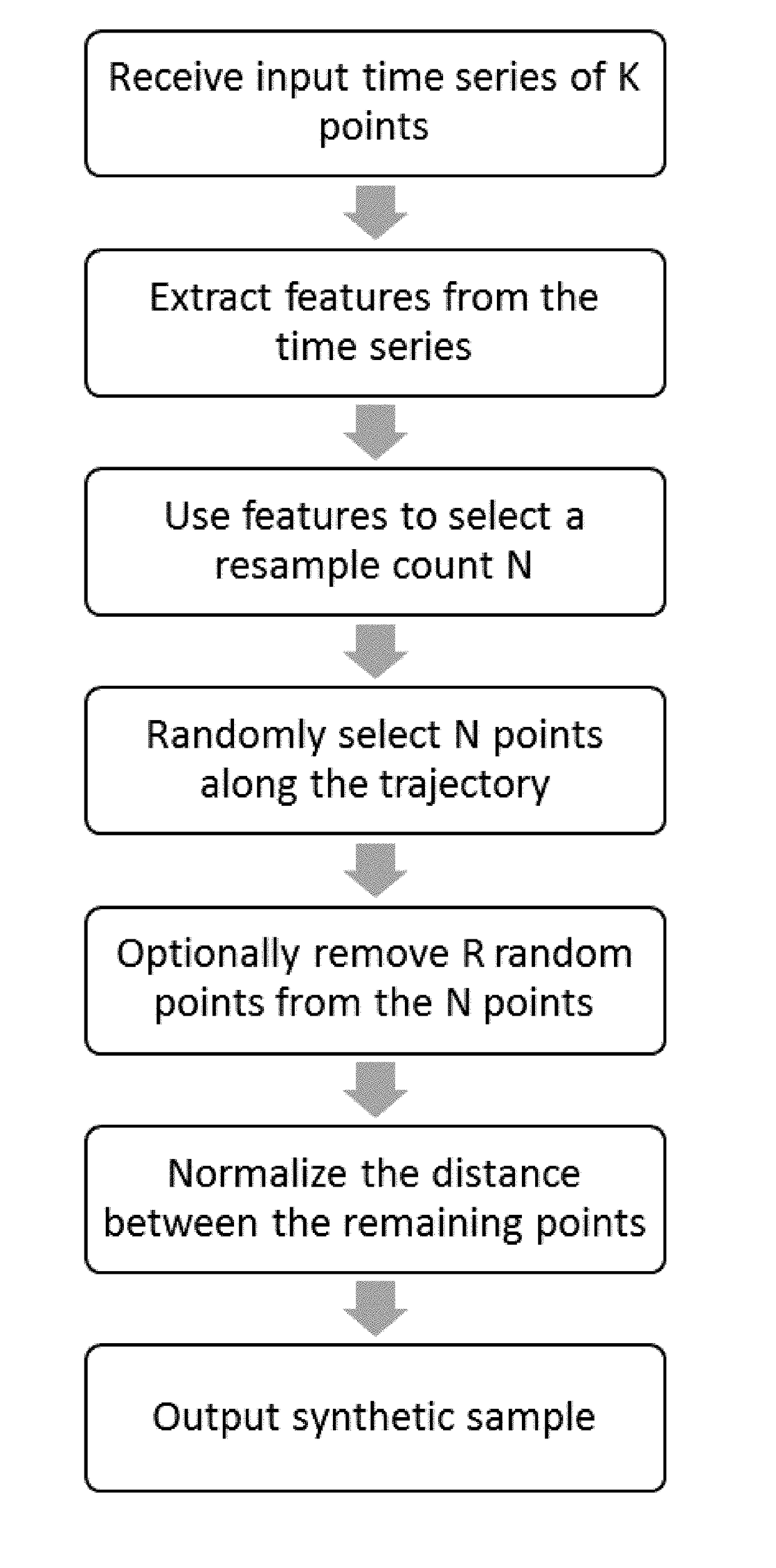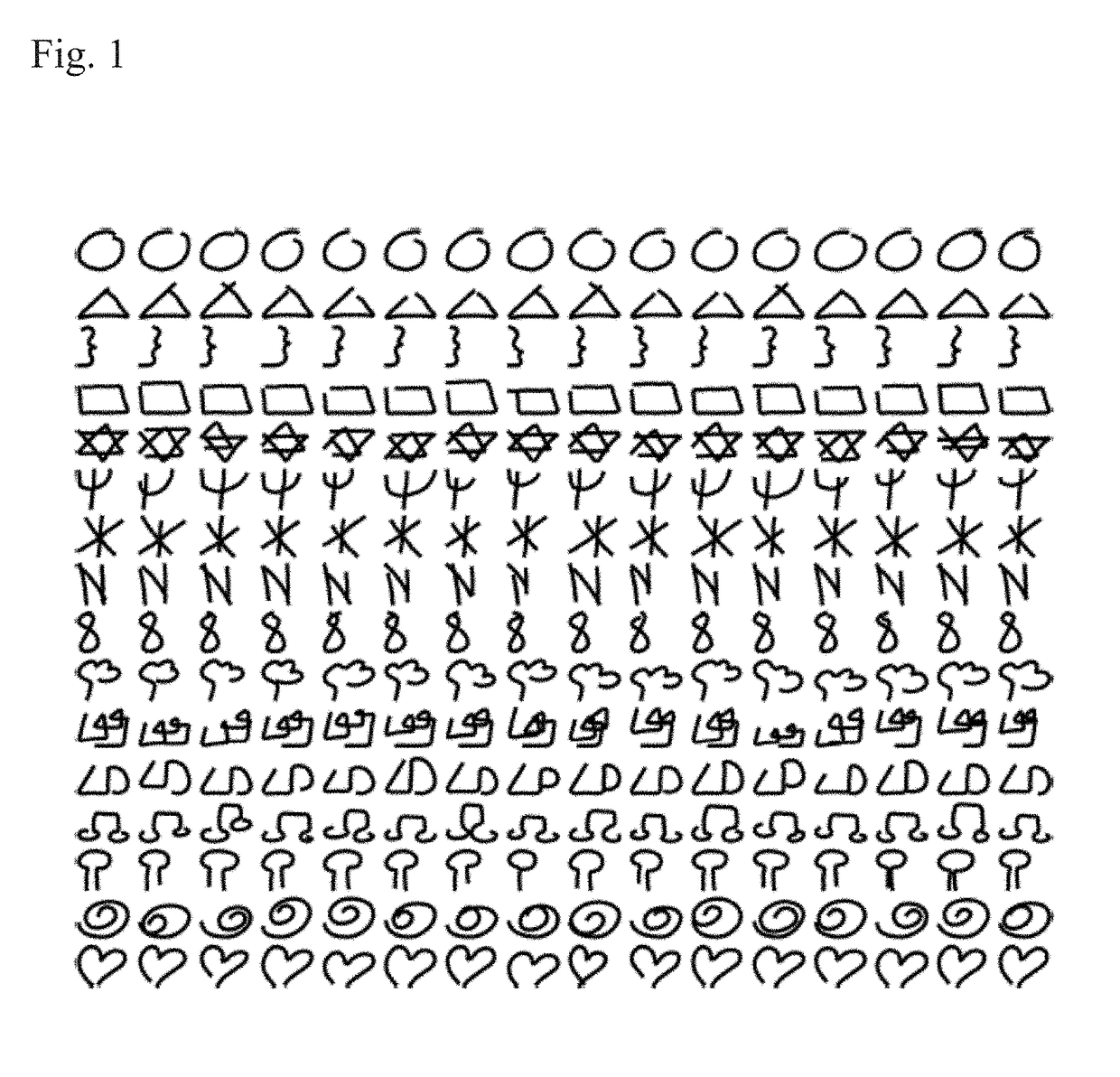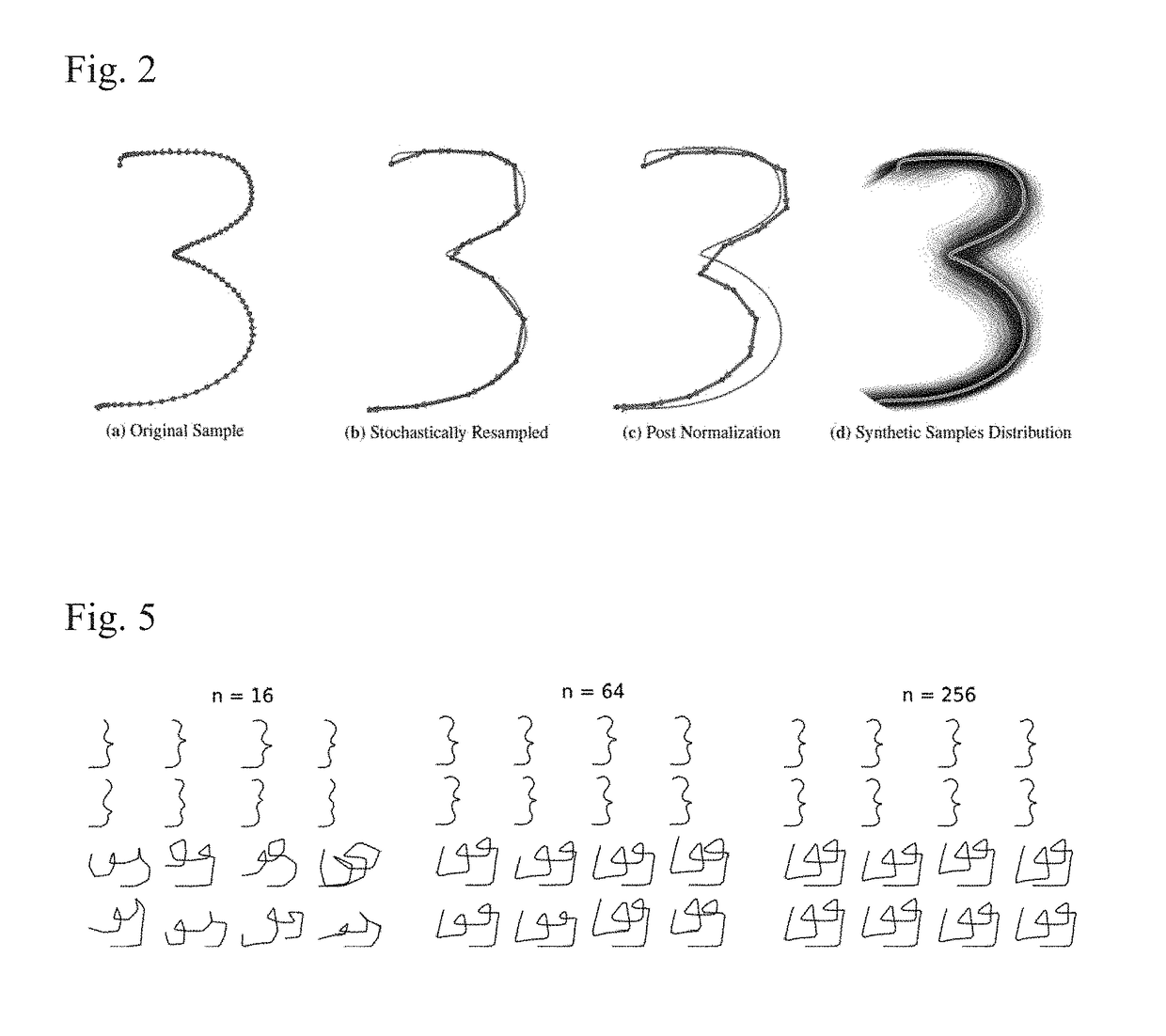Synthetic data generation of time series data
a time series and data technology, applied in the field of synthetic data generation, can solve the problems of difficult problems to solve, popular approaches are also inappropriate for rapid prototyping or gesture customization, and attempts to generalize these techniques to higher dimensionalities have not been successful, so as to achieve the effect of minimizing the probability
- Summary
- Abstract
- Description
- Claims
- Application Information
AI Technical Summary
Benefits of technology
Problems solved by technology
Method used
Image
Examples
example 1
A. Parameter Selection
[0069]In certain embodiments, the current invention contemplates the selection of three parameters: variance σ2, removal count x, and resampling count n. With respect to variance σ2, it was found that this parameter had little influence on recognizer accuracy—any variance setting was sufficient to achieve good results. Therefore, σ2=0.25 was used, and the parameter was held constant for the remainder of the analysis.
[0070]Removal count x, on the other hand, had a noticeable impact on synthetic gesture quality. At x=2, recognition accuracy results were indeed improved, but as x increased, gesture quality rapidly deteriorated. For this reason, the removal count was held constant at two.
[0071]The resampling count n had the biggest impact on accuracy and gesture quality. As illustrated in FIG. 5, one can see that the selection of n significantly impacted synthetic gesture generation. With a low resolution such as with n=16, the left curly brace [Jacob O. Wobbrock e...
example 2
[0107]Gesture path SR (GPSR) is used herein as part of a process to find an appropriate rejection threshold for gesture spotting, for example in a continuous data stream, such as a video. The GPSR technique has been described herein and is now being applied to establish a rejection threshold. Generally, the rejection threshold is the value at which similarity between previous gestures and a new gesture determines whether the user actually performed the gesture. If similarity is sufficiently high, then the gesture is considered performed and the sample is accepted; if similarity is not sufficiently high, then the gesture is considered not performed and the sample is rejected. Determining this rejection threshold without a large sample set is difficult, which is why the previously-discussed SR method is used to create a synthetic distribution. See FIG. 8. Synthetic samples are repeatedly compared to new samples to obtain a distribution of scores that provide an indication as to how fu...
PUM
 Login to View More
Login to View More Abstract
Description
Claims
Application Information
 Login to View More
Login to View More - R&D
- Intellectual Property
- Life Sciences
- Materials
- Tech Scout
- Unparalleled Data Quality
- Higher Quality Content
- 60% Fewer Hallucinations
Browse by: Latest US Patents, China's latest patents, Technical Efficacy Thesaurus, Application Domain, Technology Topic, Popular Technical Reports.
© 2025 PatSnap. All rights reserved.Legal|Privacy policy|Modern Slavery Act Transparency Statement|Sitemap|About US| Contact US: help@patsnap.com



